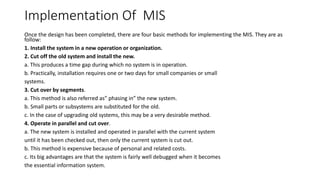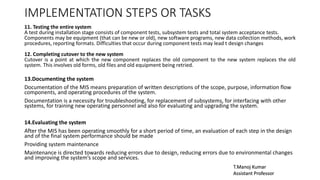The document outlines the implementation and evaluation process of a Management Information System (MIS), detailing four basic methods of implementation: new operations installation, segment cutover, parallel operation, and system cutover. It also lists key implementation tasks such as planning, hardware acquisition, personnel organization, software completion, and comprehensive testing. Additionally, the evaluation section discusses performance assessment approaches, focusing on effectiveness, efficiency, and cost/benefit analysis to enhance MIS functionality.










